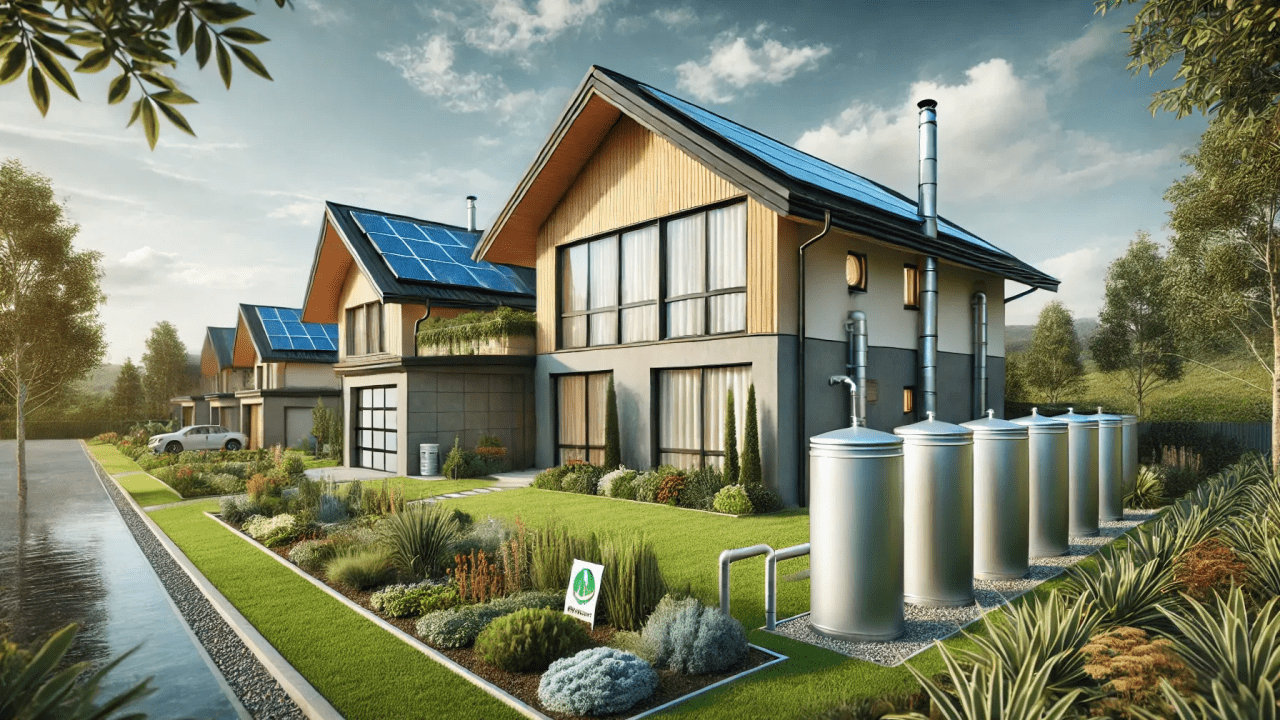Rainwater Harvesting: A Smart Move for Sustainable Apartment Living in Pakistan

Introduction
Water scarcity is a growing crisis in many parts of Pakistan, driven by climate change, rapid urbanization, and poor resource management. As cities expand and the demand for water intensifies, sustainable practices like rainwater harvesting are becoming essential—especially in multi-unit developments. Projects like Falaknaz Greens, One Beverly, and The Mega Mall are paving the way by integrating smart water management systems, including rainwater harvesting, into their infrastructure.
Rainwater harvesting not only reduces dependence on municipal water supplies but also promotes environmental responsibility and long-term cost savings. In a country where water stress is escalating, this practice is no longer optional—it’s a necessity.
What Is Rainwater Harvesting?
Rainwater harvesting is the process of collecting, storing, and using rainwater for various domestic purposes. It typically involves:
Rooftop catchment systems
Gutters and downpipes
Filtration units
Storage tanks or underground reservoirs
Distribution for non-potable uses
The collected rainwater can be used for:
Flushing toilets
Washing cars
Gardening and landscaping
Cleaning common areas
In some cases, with proper purification, it can even be used for drinking and cooking.
Why It’s Crucial for Pakistan
Pakistan is among the world’s most water-stressed countries. Key issues include:
Over-reliance on groundwater
Inefficient irrigation and plumbing systems
Loss of rainwater due to poor urban drainage
Seasonal water shortages in urban centers
With rainfall patterns becoming more erratic due to climate change, capturing and storing rainwater offers a reliable backup and conservation strategy.
Benefits of Rainwater Harvesting in Apartments
1. Reduced Water Bills
Rainwater harvesting helps supplement municipal water, which reduces:
Monthly utility costs
Overuse of treated water for non-essential tasks
Pressure on urban water supply networks
At Falaknaz Greens, for instance, integrating these systems across apartment blocks helps lower maintenance fees and operating costs for residents.
2. Flood Mitigation
Proper rainwater harvesting prevents surface runoff from overwhelming stormwater drains. In high-density developments like The Mega Mall, this:
Reduces flooding during monsoons
Prevents waterlogging in basements and parking areas
Minimizes erosion around the building foundation
3. Sustainable Landscaping
Rainwater is ideal for:
Irrigating green belts and rooftop gardens
Watering indoor plants and lawns
Maintaining urban biodiversity
One Beverly, with its landscaped green spaces and rooftop gardens, utilizes harvested rainwater to maintain its lush surroundings year-round.
4. Groundwater Recharge
Where infrastructure permits, excess rainwater can be filtered and directed to recharge groundwater reserves. This supports long-term sustainability and combats water table depletion in urban zones.
5. Environmental Stewardship
Incorporating rainwater harvesting is a proactive measure that:
Conserves natural resources
Reduces carbon footprint from water processing
Promotes eco-conscious living
Attracts buyers seeking green-certified homes
Developments that adopt these practices earn higher sustainability ratings and increased market value.
How Developers Are Leading the Way
Forward-thinking builders like those behind Falaknaz Greens are integrating rainwater harvesting through:
Sloped rooftop designs to direct flow
High-capacity storage tanks
Filtration units for hygiene and usability
Digital monitoring for water levels and usage
The Mega Mall uses harvested rainwater for cleaning, landscaping, and maintaining common facilities—demonstrating how large-scale adoption can have a significant impact.
Resident Role in Maximizing Effectiveness
Even the best-designed systems rely on resident cooperation:
Reporting leaks and maintenance issues promptly
Using water mindfully, especially during dry spells
Participating in awareness sessions and water-saving programs
Supporting eco-friendly HOA policies
In One Beverly, residents are educated on how harvested rainwater is being used, creating a shared sense of ownership and responsibility.
Government Support and Future Potential
Pakistan’s urban planning authorities and municipal bodies can help scale adoption by:
Mandating rainwater harvesting for new developments
Offering incentives and subsidies for retrofitting systems
Creating public awareness campaigns
Including rainwater harvesting in building codes
With policy support, rainwater harvesting can move from a niche feature to a standard urban development practice.
Challenges and Overcoming Them
Some common challenges include:
High initial setup cost
Lack of skilled labor for installation
Maintenance requirements for filtration systems
Limited awareness among developers and homeowners
However, as more successful case studies emerge from projects like Falaknaz Greens, these barriers are gradually being overcome.
Final Thoughts
Rainwater harvesting is one of the simplest yet most powerful tools for sustainable living in urban Pakistan. It offers a cost-effective, environmentally friendly, and future-ready solution to one of the nation’s most pressing challenges: water scarcity.
By incorporating rainwater harvesting, developers like One Beverly, Falaknaz Greens, and The Mega Mall are not just building apartments—they’re building resilient communities that protect resources and enhance quality of life.


